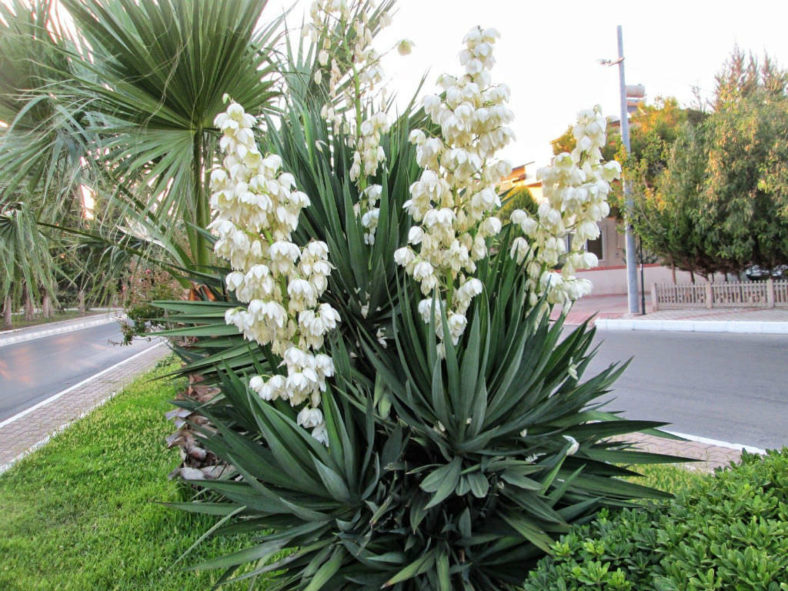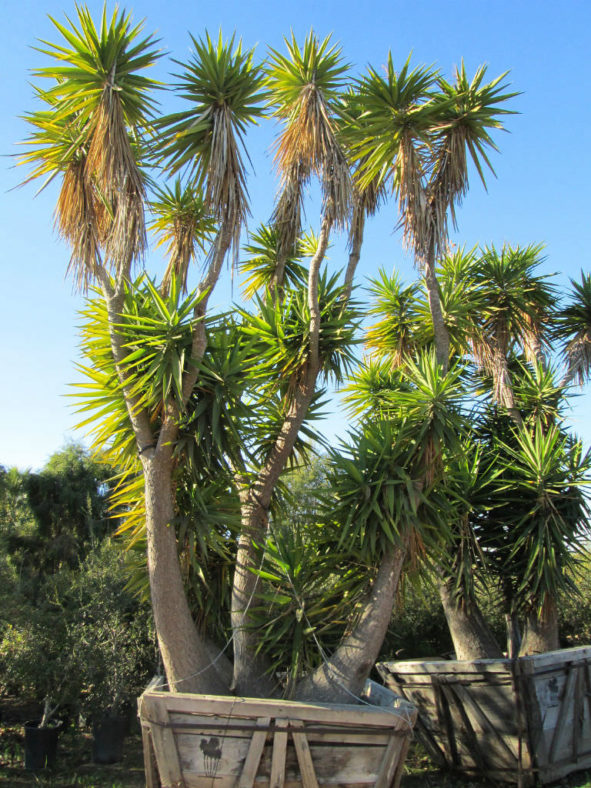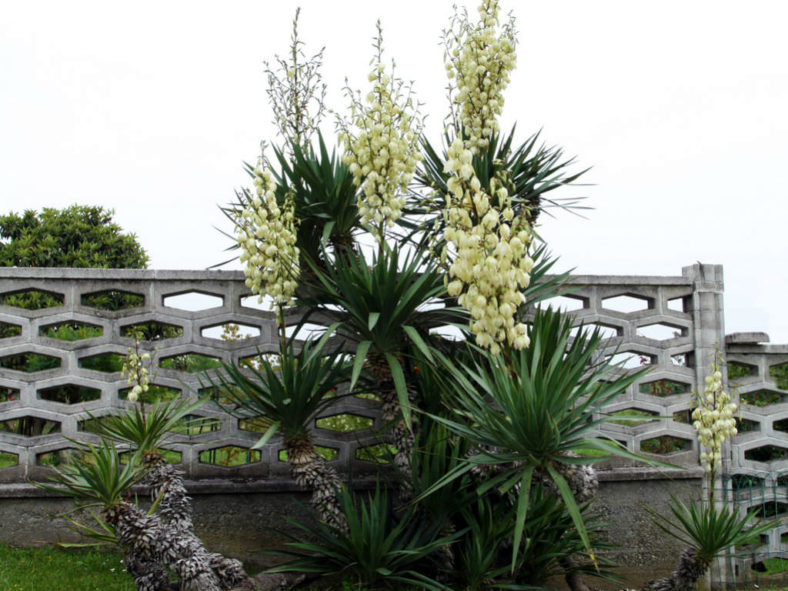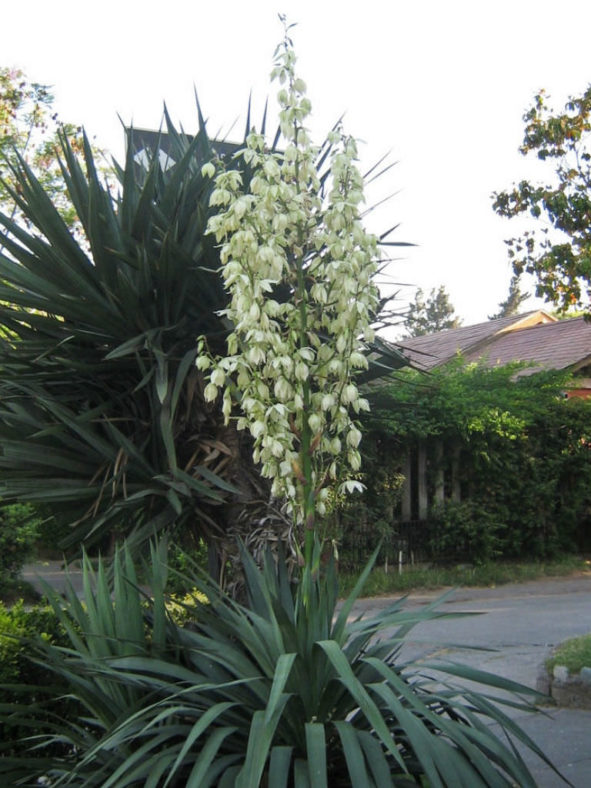Scientific Name
Yucca gloriosa L.
Common Name(s)
Adam's Needle, Lord's Candlestick, Mound Lily, Mound Lily Yucca, Palm Lily, Roman Candle, Sea Islands Yucca, Soft Tip Yucca, Soft Tipped Yucca, Spanish Bayonet, Spanish Dagger, Tree Lily, Curve Leaf Yucca, Pendulous Yucca, Weeping Yucca
Scientific Classification
Family: Asparagaceae
Subfamily: Agavoideae
Genus: Yucca
Etymology
The specific epithet "gloriosa" (pronounced "glo-ree-OH-suh") means "glorious" and refers to the striking and showy appearance of this species.
Origin
Yucca gloriosa is native to the southern United States, from North Carolina to Florida.
Description
Yucca gloriosa is a relatively slow-growing shrub or small tree, usually solitary or rarely with several stems arising from the base and topped by a cluster of stiff, sword-like, glaucous-green leaves. It can grow up to 8 feet (2.4 m) tall. The leaves are linear, typically with smooth or, rarely, finely toothed margins and a pointed tip. They can measure up to 20 inches (50 cm) in length and 2 inches (5 cm) in width.
The bell-shaped, creamy-white flowers, sometimes tinged with red or purple, appear in late summer. They are arranged in a panicle borne on a long stalk, with the lower portion resting among the leaves. The flower stalk can grow up to 4 feet (1.2 m) long. The fruits are leathery, elongated, 6-lobed berries that can reach a length of 3.2 inches (8 cm).

Varieties of Yucca gloriosa
- Yucca gloriosa var. gloriosa
- Yucca gloriosa var. tristis
Cultivars of Yucca gloriosa
How to Grow and Care for Yucca gloriosa
Hardiness: USDA hardiness zone 7a to 11b: from 0°F (-17.8°C) to 40°F (4.4°C).
Under the right conditions, Yuccas are not difficult plants to grow. They tend to thrive on a bit of neglect rather than too much attention. They are especially prone to overwatering, and soggy stems indicate excessive water. The best conditions for Yucca include a sunny corner with relatively low humidity. They are not prone to many pests, although scale can be an issue. Over time, plants will typically lose their lower leaves (in nature, they droop, forming a skirt around the trunk), giving the plant a pleasant "tree-like" appearance.
Yuccas are relatively slow-growing plants that typically only require repotting every other year. They do well, slightly pot-bound, as long as they don't become heavy enough to tip over their containers.
See more at How to Grow and Care for Yucca.
Links
- Back to genus Yucca
- Succupedia: Browse succulents by Scientific Name, Common Name, Genus, Family, USDA Hardiness Zone, Origin, or cacti by Genus
Photo Gallery
Click on a photo to see a larger version.


